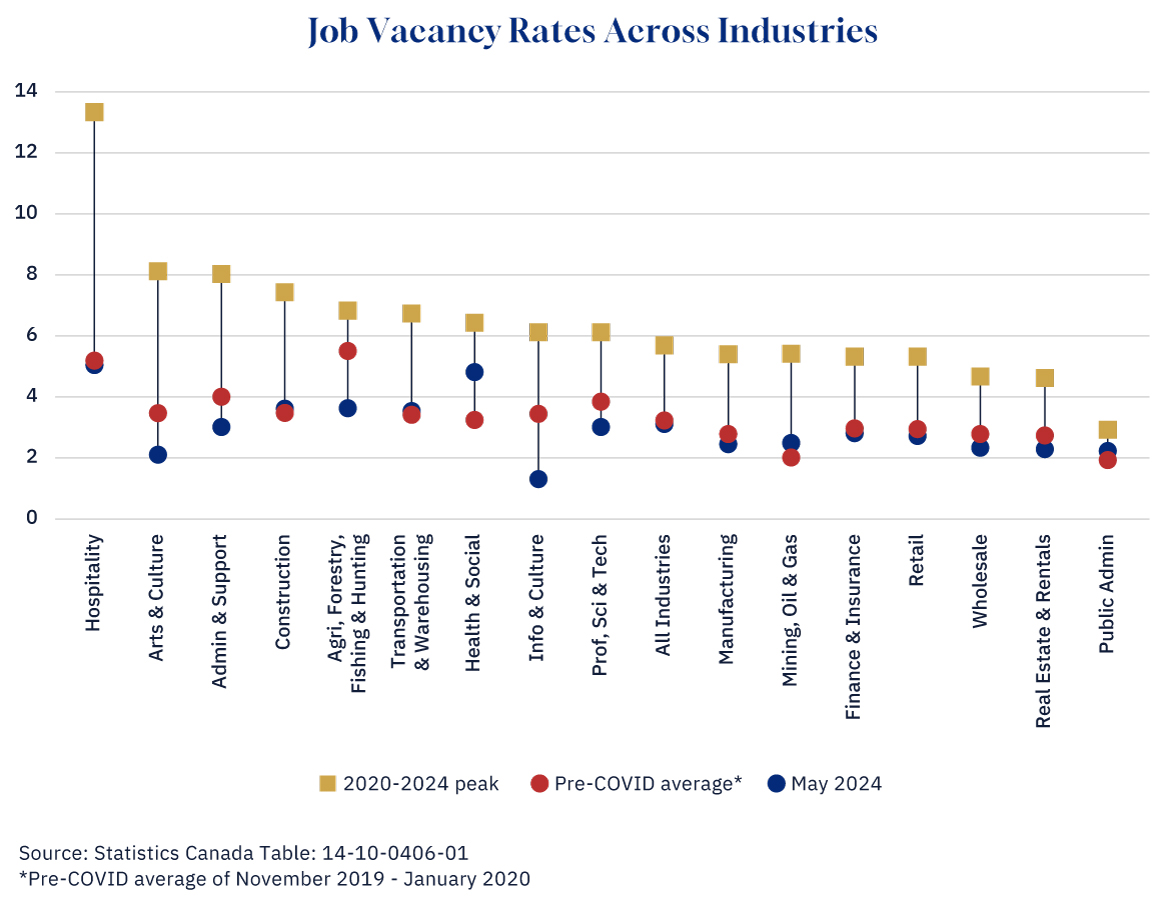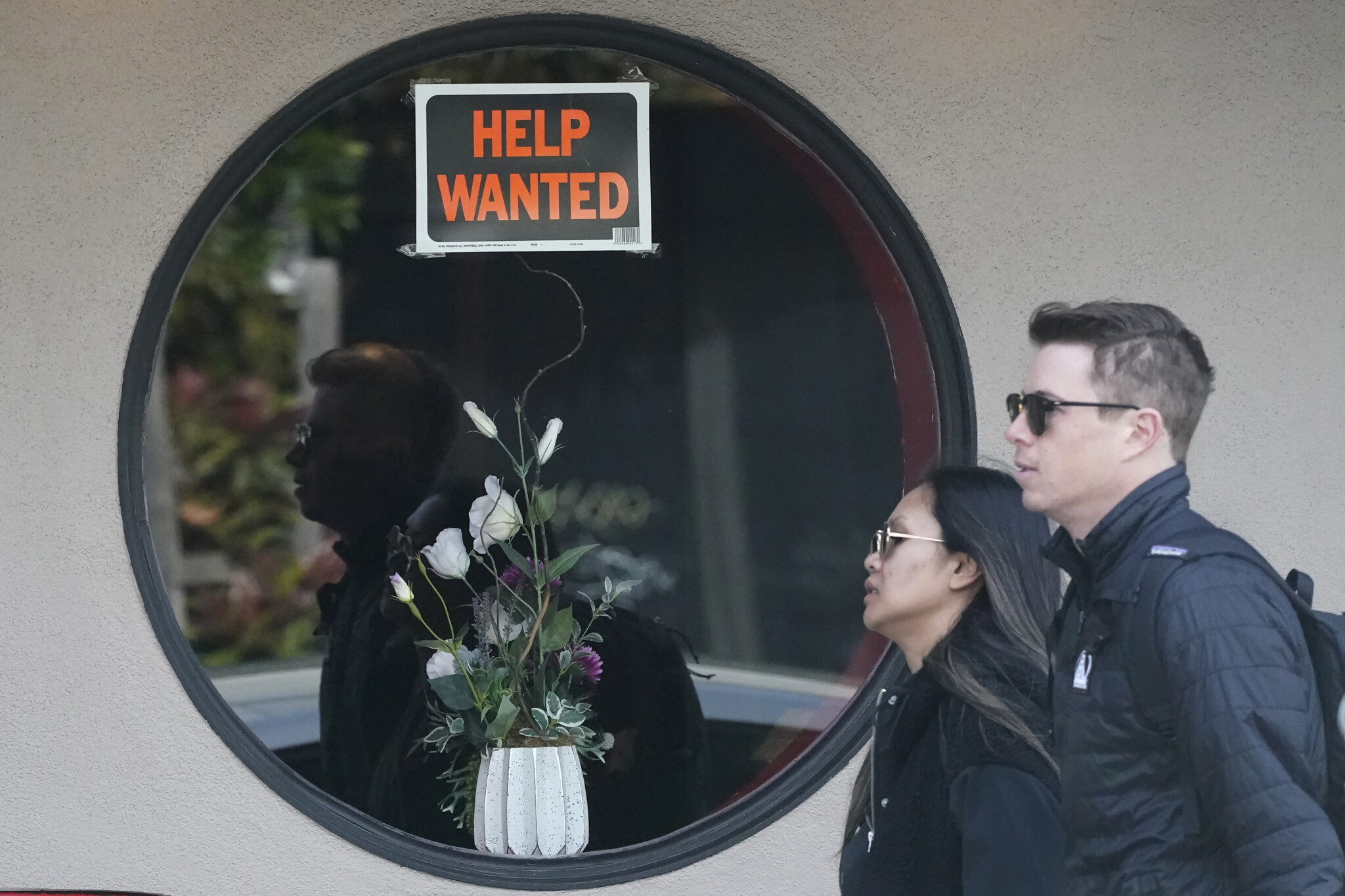In each EconMinute, Business Council of Alberta economist Alicia Planincic seeks to better understand the economic issues that matter to Canadians: from business competitiveness to housing affordability to living standards and our country’s lack of productivity growth. She strives to answer burning questions, tackle misconceptions, and uncover what’s really going on in the Canadian economy.
Two years ago, a lack of workers was a top economic concern and a hot topic of conversation. While some viewed labour shortages as a temporary challenge of an over-heated economy, others said it was more structural. Canada was experiencing a “grey wave” of retirement and sectors with an older workforce would be hit especially hard.
As of the latest data, the job vacancy rate has returned to its pre-COVID level (about 3 percent)—down significantly from its 5.7 percent peak in the spring of 2022. Other information from business surveys and online job postings tells a similar story. It’s easier to find workers and harder to find work.
Open postings aren’t just disappearing in a few big industries either. They’re down across nearly every sector of the economy. Twelve of the 16 industries analyzed now have a job vacancy rate in line with or below their pre-COVID average.
The difference between industries has also shrunk. Those that faced the most difficulty hiring a couple years ago (think back to where you saw all those “help wanted” signs) have seen the biggest decline in vacant postings.
For instance, hospitality—the industry that at one point held the highest job vacancy rate ever recorded—now looks like any other industry. Likewise, vacancies in construction, an industry whose concerns of a shrinking workforce pre-date COVID, have fallen back down to a vacancy rate of 3.6 percent, just a hair above its previous norm.
Only one industry is having a noticeably harder time finding workers, and that is health care. Though the struggle to find staff isn’t as bad as it was two years ago, it’s still a challenge. The job vacancy rate is nearly 50 percent higher than previous norms and is the highest of any industry.

Graphic credit: Janice Nelson.
Overall, the collapse in the job vacancy rate does not disprove the theory that labour shortages are a new norm. A weak economy could be masking an underlying issue. After all, the one industry bucking the trend is primarily comprised of public sector jobs that are least affected by the health of the economy. Also worth noting, certain roles within industries may remain harder to fill.
Nonetheless, it’s a good reminder of how much, and how quickly, labour markets can change—from not enough workers to too many. And is also a cautionary tale for policy solutions that seek to intervene.
This post was originally published by the Business Council of Alberta at businesscouncilab.com.









